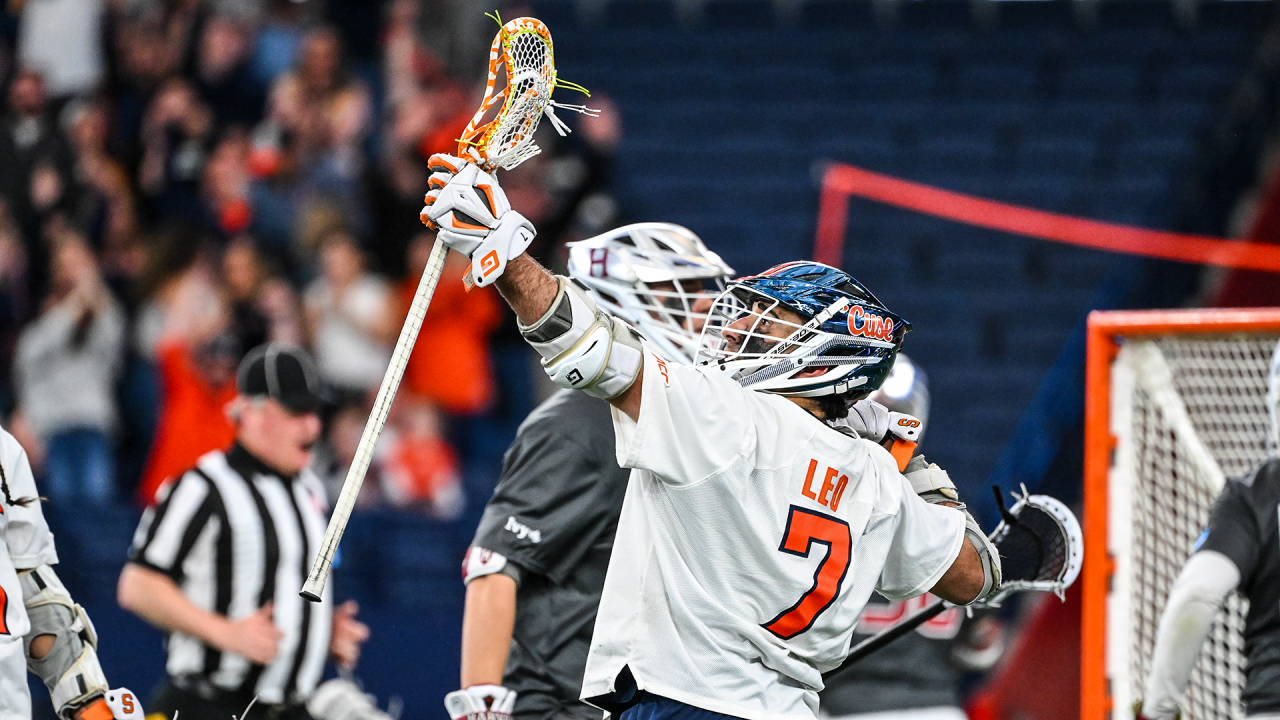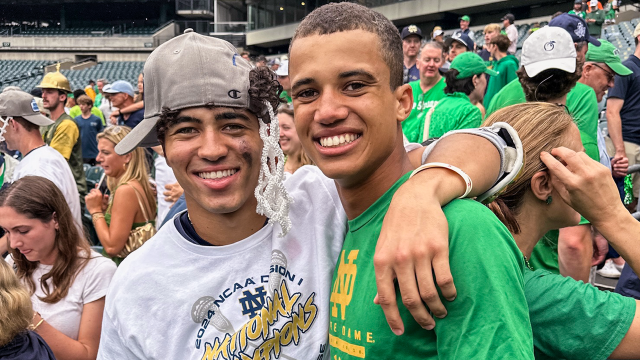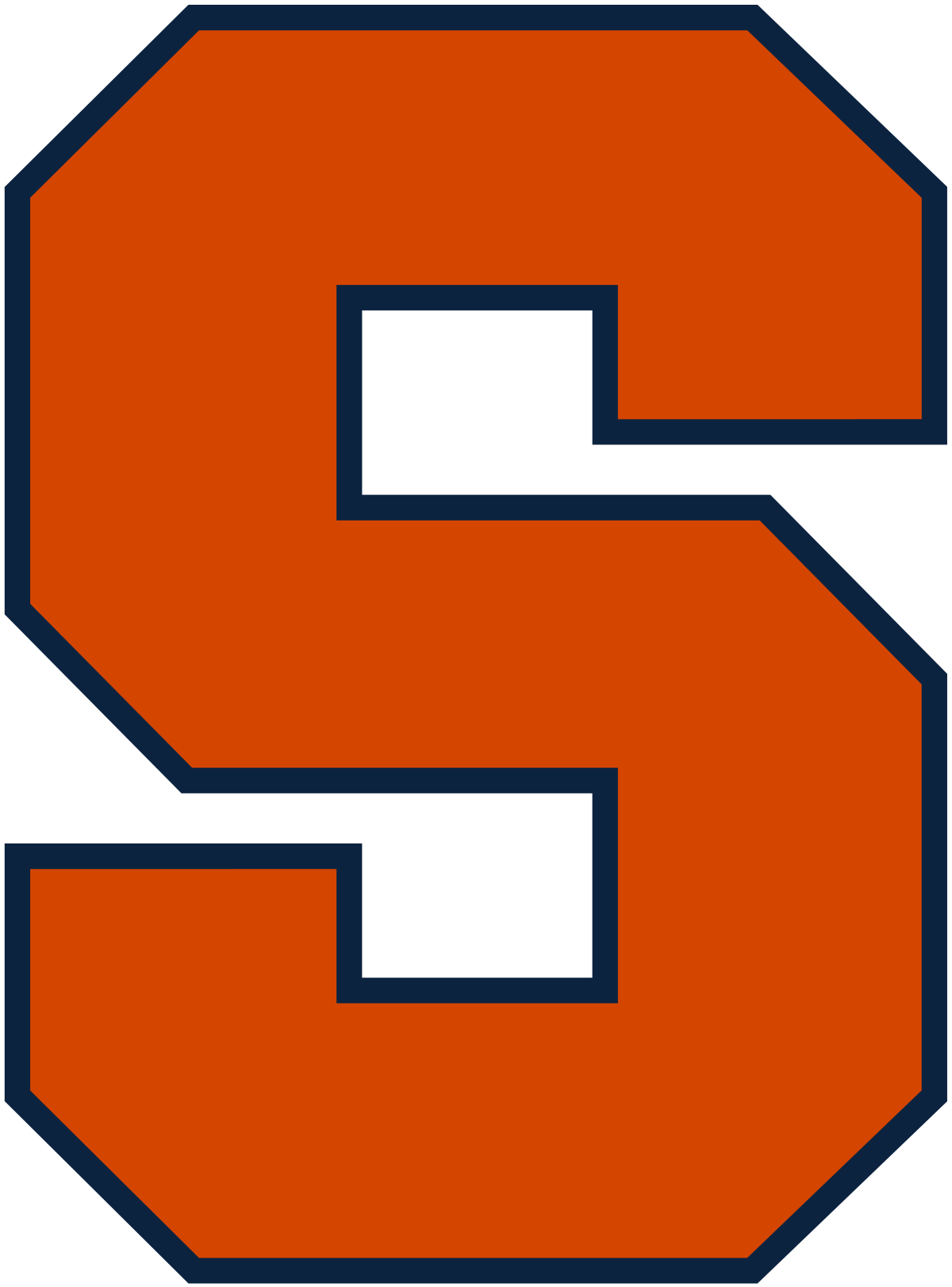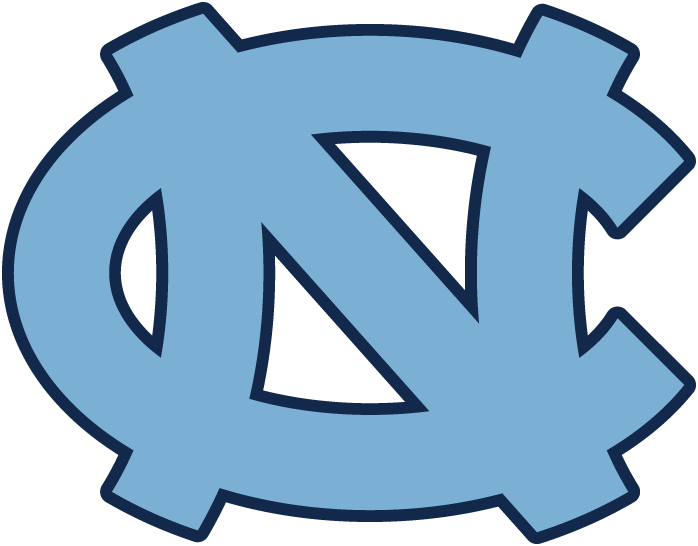
First-Round Rewind: Vintage Syracuse Comeback, a Black Eye and Seeds of Doubt
It was long a May truism: No lead is safe against Syracuse.
And while the Orange generally haven’t been a postseason juggernaut for the last decade and a half, perhaps it’s time to dust off that old pearl of wisdom.
Aided by three goals during an extra-man opportunity that arose from a one-minute, non-releasable cross check, the sixth-seeded Orange scrambled past Harvard 13-12 in overtime Sunday in the most riveting of the eight games on the opening weekend of the NCAA tournament.
Syracuse (12-5) allowed the first three goals and trailed 8-2 at halftime. And when the Crimson’s Jack Speidell scored with 10:59 to go to make it 11-6, it seemed Harvard might make it out of the Dome with a victory for the second time this season.
The Orange uncorked one of its classic runs, scoring six consecutive goals. They took their first lead on Michael Leo’s extra-man dart with 3:32 to go. Even after Harvard forced overtime on Owen Gaffney’s score in the closing seconds, the Crimson couldn’t get a chance to win it. Syracuse won the opening faceoff of the extra period, and Owen Hiltz deposited the winner 51 seconds into overtime.
The upshot is it brings Syracuse back to the point it reached a season ago — heading into a quarterfinal, on the doorstep of finally playing in late May for the first time since 2013. That’s an eternity for a program that once made 22 consecutive semifinal appearances and went undefeated in 25 quarterfinal games from 1983 to 2009.
Since then? Syracuse is 1-5 in quarterfinals, including a 10-8 loss to Denver last season. That result, combined with the Orange’s considerable number of experienced upperclassmen, gave this spring a bit of a pass/fail vibe. The determinant? Whether Syracuse can beat third-seeded Princeton on Saturday in Hempstead, N.Y.
Harvard nearly spoiled those hopes a weekend early. Instead, the Orange’s core group gets its latest chance to restore the program’s place as a factor on Memorial Day weekend.
CHEMOTTI SHINES ON
Could there possibly be a better way for a coach to effectively motivate a team to be gritty, determined, focused and physical than to be sporting a black eye while doing so?
It was hardly an intentional ploy by Richmond coach Dan Chemotti, who wore a noticeable bruise under his left eye during the Spiders’ 13-10 victory over North Carolina on Saturday. But it was a topic of discussion after Richmond earned its first-ever NCAA tournament victory.
Chemotti said the injury occurred at the end of the first quarter of Richmond’s Atlantic 10 tournament title game victory over High Point, when after a tough defensive play the Spiders celebrated on the sideline. Faceoff man Jared Chenoy was standing next to Chemotti and inadvertently poked the end of his stick into his coach’s face.
“The funnier part is he’s trying to give me ice on the sideline to put on it,” Chemotti said. “I’m like, ‘We have a championship to win.’ It stunned me for a minute, and I didn’t know it would look like this.”
The Spiders’ Lucas Littlejohn and Max Merklinger laughed when the subject was brought up. For his part, Chemotti has found himself telling the tale several times in the last week.
“I forget about it,” Chemotti said. “Even this morning in the [hotel] elevator, somebody gets in the elevator and it’s a nice couple and I smile at them and they’re [recoiling].”
TOBACCO ROLLED
Duke and North Carolina lost in the first round of the NCAA tournament in the same season for the first time since 1995, combining for a Saturday to forget in the Research Triangle.
North Carolina easily had the better of play for the first half against Richmond but only had a three-goal lead to show for it. The Spiders wiped that out in the first three minutes after halftime, and neither team built more than a two-goal lead the rest of the way until Richmond’s Gavin Creo scored an empty-netter with 1:41 to go.
For a team that was 9-2 in mid-April, it was a premature conclusion to a year that included a share of the ACC regular season title and the program’s first NCAA berth since 2021.
The Tar Heels were heavily reliant on attackmen Owen Duffy and Dominic Pietramala all year, and that manifested itself Saturday. That duo — banged up in the second half of the season — combined for six goals on 21 shots. The rest of the roster had four goals on 24 shots.
“The support staff, they were unreal patching Owen Duffy and Dom Pietramala together throughout the year and just giving them a chance to play on Saturdays,” Breschi said. “Those guys didn’t practice much during the beginning of weeks. We had Army and then five straight ACC games, which we know is just a slugfest, and then the NCAA tournament game.”
Hours later, Duke never had the lead against Georgetown, though it did forge a halftime tie on faceoff man Cal Girard’s goal from the restraining line. The Hoyas scored the first three goals of the second half, and Duke’s erratic half-field play coupled with Georgetown faceoff man Ross Prince’s strong day prevented the Blue Devils from keeping things tight.
Duke was sort of the reverse of North Carolina, struggling to find itself for much of the season before winning three in a row (Syracuse, Virginia, North Carolina) to help secure a first-round home game even with an ACC title game loss.
But whatever mojo the Blue Devils enjoyed was gone by the time the postseason arrived, and there was an abundance of things that were not particularly sharp against the Hoyas.
“Passing, catching, shooting, ground balls, faceoffs, clearing, team defense, individual defense,” coach John Danowski said.
Danowski didn’t let anyone off the hook, least of all himself. And unlike North Carolina, Duke didn’t have a conference regular season title to latch onto and it took a step back in the postseason compared to last year’s quarterfinal disappointment against Maryland.
All that was left was to wonder how it happened — something several Duke players undoubtedly were doing as they lingered around the Koskinen Stadium field more than an hour after their season ended.
SEEDS OF DOUBT
A year after the first all-chalk first round, three seeded teams were bounced on the opening weekend. No. 4 Ohio State, No. 7 Duke and No. 8 North Carolina all fell at home and more carnage was possible since No. 6 Syracuse needed overtime against Harvard and No. 5 Penn State didn’t take the lead for good over Colgate until the final two minutes.
It’s only the fifth time at least three home teams lost since the field expanded to 16 teams in 2003. The other instances:
- 2012: Colgate beat No. 6 Massachusetts, Maryland defeated No. 7 Lehigh and Denver upended No. 8 North Carolina. Maryland went on to reach the national title game as an unseeded team
- 2014: Bryant stunned No. 2 Syracuse, Albany throttled No. 3 Loyola, Drexel tripped up No. 4 Penn and Johns Hopkins handled No. 8 Virginia. All four lost in the quarterfinals.
- 2015: Ohio State dispatched No. 5 Duke, Johns Hopkins bounced No. 7 Virginia (again) and Albany chased No. 8 Cornell from the field. Hopkins pulled another surprise the next week, turning back second-seeded Syracuse to reach the semifinals.
- 2016: Towson came out of a play-in game to stun No. 2 Denver, Navy picked off No. 4 Yale and North Carolina edged No. 6 Marquette. It was the start of North Carolina’s run to a national title, and the Tar Heels remain the only unseeded team to win the NCAA tournament.
ROAD ROUTS
Notre Dame’s 15-6 drubbing of Ohio State is tied for the third-most lopsided victory for a road team in the first round of the postseason since the NCAA moved away from predetermined sites for the first weekend of the tournament in 2003.
Year | Road Winner | Host Opponent | Margin (Score) |
|---|---|---|---|
| 2017 | Duke | No. 6 Johns Hopkins | 13 (19-6) |
| 2015 | Johns Hopkins | No. 7 Virginia | 12 (19-7) |
| 2015 | Albany | No. 8 Cornell | 9 (19-10) |
| 2025 | Notre Dame | No. 4 Ohio State | 9 (15-6) |
| 2008 | Ohio State | No. 8 Cornell | 8 (15-7) |
| 2013 | Cornell | No. 6 Maryland | 8 (16-8) |
| 2011 | Maryland | No. 8 North Carolina | 7 (13-6) |
| 2014 | Albany | No. 3 Loyola | 7 (13-6) |
| 2022 | Virginia | No. 8 Brown | 7 (17-7) |
THE WISDOM OF CROWDS
Syracuse’s announced crowd of 5,109 for its 13-12 victory over Harvard was the fifth-largest for a first-round game since the NCAA expanded the tournament to 16 teams in 2003.
Year | Site | Attendance | Opponent | Score |
|---|---|---|---|---|
| 2017 | No. 8 Albany | 6,472 | North Carolina | W, 15-12 |
| 2010 | No. 2 Syracuse | 5,479 | Army | L, 9-8 (2OT) |
| 2022 | No. 6 Rutgers | 5,212 | Albany | W, 19-9 |
| 2025 | No. 6 Syracuse | 5,109 | Harvard | W, 13-12 (OT) |
| 2006 | No. 6 Cornell | 5,023 | Massachusetts | L, 10-9 |
EIGHT GAMES, EIGHT STARS
Lucas Littlejohn, A, Richmond: The sophomore scored four goals on six shots, including two scores in a crucial early second-half stretch, as the Spiders rallied past North Carolina 13-10 in the first game of the weekend.
Nate Kabiri, A, and Tucker Wade, M, Princeton: Both sophomores posted five-goal, two-assist lines as the Tigers ripped Towson 22-12 to advance to the quarterfinals for the first time since 2022. The team output matched Princeton’s largest in an NCAA tournament game, a record first established with a 22-6 rout of Towson in 1996.
Liam Matthews, A, Penn State: Had four goals, including the tying and go-ahead scores in the final 5:01 of the Nittany Lions’ 13-11 defeat of Colgate.
Aidan Carroll, A, Georgetown: A week after hauling the Hoyas into their seventh NCAA tournament in a row with an eight-goal effort against Villanova in the Big East title game, the grad student scored six times to lead Georgetown past Duke.
Will Lynch, FO, Notre Dame: Turned in a 17-of-23 effort to tilt possession strong toward the Fighting Irish, who throttled Ohio State 15-6.
Eric Spanos, A, Maryland: Became only the third Terrapin to score six goals in an NCAA tournament game, joining Ed Mullen (seven against Navy in 1976) and Jared Bernhardt (six against Vermont in 2021) and helping Maryland cruise past Air Force 13-5 and earn a quarterfinal trip for the 12th time in 14 postseasons under John Tillman.
John Mullen, FO, Syracuse: His 16-of-17 effort after halftime helped the Orange monopolize possession, particularly when it scored five times in 99 seconds in the fourth quarter to climb back into its eventual overtime defeat of Harvard.
CJ Kirst, A, Cornell: Authored a memorable final game at Schoellkopf Field, scoring six goals in a game for the sixth time this season as the Big Red handled Albany 15-6.
TEWAARATON WATCH
Chris Kavanagh, A, Notre Dame: The Irish star had three goals and two assists in the 15-6 rout of Ohio State. Kavanagh has 36 goals and 25 assists in his final season in South Bend.
Sam King, A, Harvard: The senior had two goals on seven shots in his final college game and finishes his last season with 37 goals and 29 assists.
CJ Kirst, A, Cornell: The Tewaaraton is almost certainly going to Division I’s career goals leader, and he padded that total with a six-goal effort against Albany. He’s up to 74 goals and 30 assists in his final season with the Big Red.
Coulter Mackesy, A, Princeton: The Tiger senior’s lone goal vaulted him past Jesse Hubbard as the top scorer in school history. Mackesy added four assists as Princeton rolled into the quarterfinals. He has 41 goals and 19 assists for the year.
SERIES BUSINESS
Looking at NCAA quarterfinal matchups:
- Cornell and Richmond have met only once, the Big Red’s 12-11 road victory on March 2.
- This will be the first postseason meeting between Notre Dame and Penn State. The Irish lead the all-time series 15-6, with Penn State winning the most recent encounter 8-7 on Feb. 22, 2014.
- Maryland is 10-2 against Georgetown, a team it has not played since a 16-11 victory on the road in 2012 — the Hoyas’ first season under Kevin Warne. The Terrapins have won both NCAA tournament matchups, 14-10 in the 1997 first round and 9-8 in the 2005 quarterfinals thanks to Andrew Schwartzman’s overtime winner.
- Syracuse owns a 21-9 lead in its series against Princeton, and won the only meeting in the last dozen years when it tripped up the Tigers 16-13 in 2023. The teams met 10 times in the tournament in a 12-season span from 1992-2003, with Syracuse winning six. The programs split four national title matchups (Princeton winning in 1992 and 2001, Syracuse in 2000 and 2002).
Patrick Stevens
Patrick Stevens has covered college sports for 25 years. His work also appears in The Washington Post, Blue Ribbon College Basketball Yearbook and other outlets. He's provided coverage of Division I men's lacrosse to USA Lacrosse Magazine since 2010.

Related Articles








